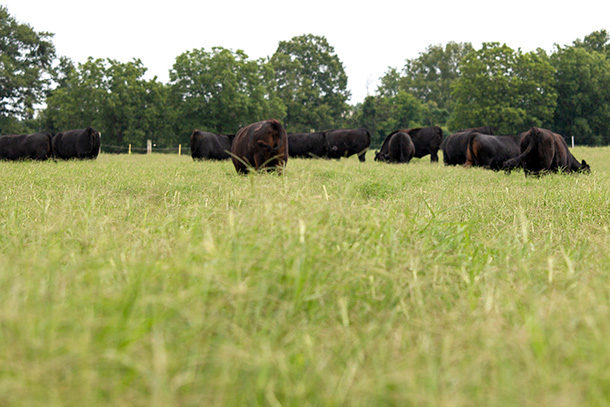Lots of folks in the ranching industry are hearing and talking about carbon and greenhouse gas emissions – and it’s not about it being produced by livestock. It is about potential opportunities to use land management to remove carbon from the air and tuck it safely away into the soils.
Next to the oceans of the world, the Earth’s soils contain the largest amount of carbon, exceeding the combination of vegetation and atmosphere together. And the good news? These same soils that are managed through our ranching industry have the potential to store even more carbon. Thus emerges the new phenomenon of the carbon sequestration markets and the second coming of the “Wild West.”
Carbon sequestration is just one of many services that our lands provide to society, and the opportunity to generate revenue through our successful land management could provide diversification beyond traditional ranching operations and revenue streams. We don’t have all the answers, but we do have some key questions that warrant further discussions as you determine your participation.
Some of you may have already been visited by folks who want to pay for sequestering carbon. They may have already offered a dollar amount per acre they are willing to pay for you to manage for carbon removal from the atmosphere and provided some guidance on what needs to be done to make it all work. But there are many questions that need to be asked when land managers are considering participation in these emerging markets. So, let’s take a look at a couple of areas for consideration as you evaluate your participation.
1. What is it that you are committing to if you decide to participate?
Landowners and managers need to consider what they are obligating themselves to when deciding to participate. What are you being asked to do? Are you committing to storing a specific amount of carbon in your lands? Are you being asked to commit to implementing specific management practices or protocols that may produce the storage? How long does your commitment last? Is it a set number of years or until a set amount of carbon is stored? Landowners and managers must pay attention to the details of potential carbon sequestration programs because they may have a direct impact on the management tools and activities for your operation.
2. What about compensation and costs?
These markets are expanding at a rapid pace, and pricing or compensation will likely be somewhat volatile until the markets stabilize. In addition, what is it that you are being compensated for? Is it implementation of practices that are defined, or is it for actual amounts of carbon that are stored during the period of the program? Will payments be driven by the market or are they fixed at the time of signing? Are there any penalties or other costs if storage rates are not met during the period of the program? What will it cost your operation to implement the management necessary to meet the storage requirements of your agreement? Keep in mind that potential compensations are often offset by management requirements that are necessary to meet agreement obligations. If grazing practices are changed, how much fence is required? If vegetation management is needed, what are the costs associated with management activities (i.e., chemicals, machinery, etc.)? Are labor increases necessary to meet the carbon management component of the operation?
3. And just how is everything going to be measured and verified?
No one is going to pay for carbon storage without some level of accountability: Who is responsible for providing the measures and verifications? How and when will the measurements be taken? What about the data? Who owns the data that is generated from the measurements? What kind of access do I have to provide and to whom for the measurement activities? Most, if not all, the activities related to carbon sequestration will require providing access to someone to collect data to account for and verify the outcomes of the storage efforts. Landowners and managers must consider their comfort with having folks on the property to collect data and how that data will be collected.
4. What kinds of possible restrictions come with participating in carbon storage markets?
Does participation limit landowners’ ability to sell or lease land that is actively in a carbon sequestration program? Do landowners retain the ability to conduct other activities on the lands such as solar, wind or fossil fuel production? Are there any management practices that are off-limits? Are there any limitations to how one can utilize the land beyond agricultural purposes?
Opportunities to diversify revenue streams in ranching operations are always attractive. We see them everyday with expansion of hunting operations or other recreational opportunities that come along with open space and interested parties. Participation in carbon sequestration markets or any other ecosystem goods and services is just one more opportunity to explore diversification of land management operations. But just like any other market, landowners and managers must weigh all the aspects of participation together and determine if their operations and management goals align with the implementation of programs on their lands. Talk it over, seek advice, listen to legal expertise and determine the return on investment (both financial and operational).
One parting thought: Land management and its impacts are based upon the actions that influence ecological and economic principles. Practices are just a means to an end: Stay focused on the principles that guide your land management and ownership goals, and implement practices to meet those goals. If it all adds up, then participating may be an option that provides dividends.








